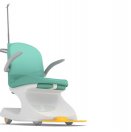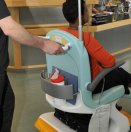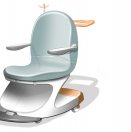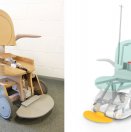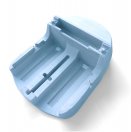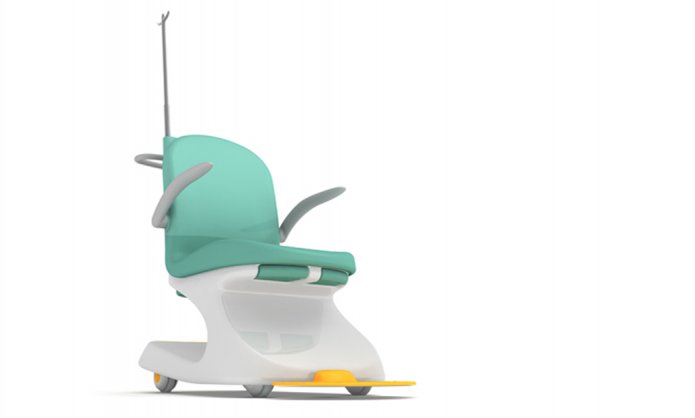
Hospital Porters Chair
Our innovative thinking won a Design Council challenge brief – but what this project really needed was literally a hands-on approach. Deep user insight was central to Minima’s perception-changing re-invention of the Hospital Porter’s Chair.
Overview
By innovating in form, materials and function the Hospital Porter’s Chair offers the patient increased levels of comfort, convenience and visual reassurance about cleanliness. Staff understand the benefits of a chair with fewer potential porter contact points which is quicker and easier to clean.
“Harnessing designer talent in the fight against healthcare-associated infections is good news for patients and for staff. Items which are designed with infection prevention control in mind such as this innovative porter’s chair by minima, will be easier to clean and likely to be cleaned more often.” (Paul Cryer, Project Manager, HCAI Technology Programme).
Why
Cross-contamination within the hospital environment and the spread of Healthcare Acquired Infections (HcAIs) such as MRSA and C difficile are ongoing concerns within the healthcare industry.
Porter’s chairs travel all over hospital sites, both inside and out, and are subject to a high degree of wear and tear. They potentially have a significant role to play in the spread of infection.
‘Design Bugs Out’ was a joint national initiative between the Department of Health, NHS Purchasing and Supply and the Design Council to support innovation for healthcare products. minima – partnered with manufacturing company, Vernacare – was the winner of one of the project’s five briefs.
How
We mined our wide Minima network of experts and consulted extensively with end users to gain a deep insight into the role, requirements and limitations of the product.
We examined how design could smooth away potential dirt traps and how the properties of materials including colour would immediately make the product more ‘healthy’ both physically (hygiene and maintenance) and psychologically (perceptions of cleanliness).
As part of our significant time and motion studies, we established that the prevention of any need to touch areas where a patient’s feet had been would reduce the spread of harmful bacteria. This led to the integration of innovative patented features such as a self-raising footplate which rests on the floor, but raises as the patient’s weight is applied to the seat.
From concept to prototype Minima led by example, distinguishing itself through its practical approach to design. Using in-house physical prototyping facilities, the innovative porter’s chair went through an ongoing programme of user-testing and design refinements.
| Ideation | Concept Sketching | Prototyping | Testing | Design for manufacture & assembly | Packaging design / manufacture | Technical Documentation | Awards/ Patents |

